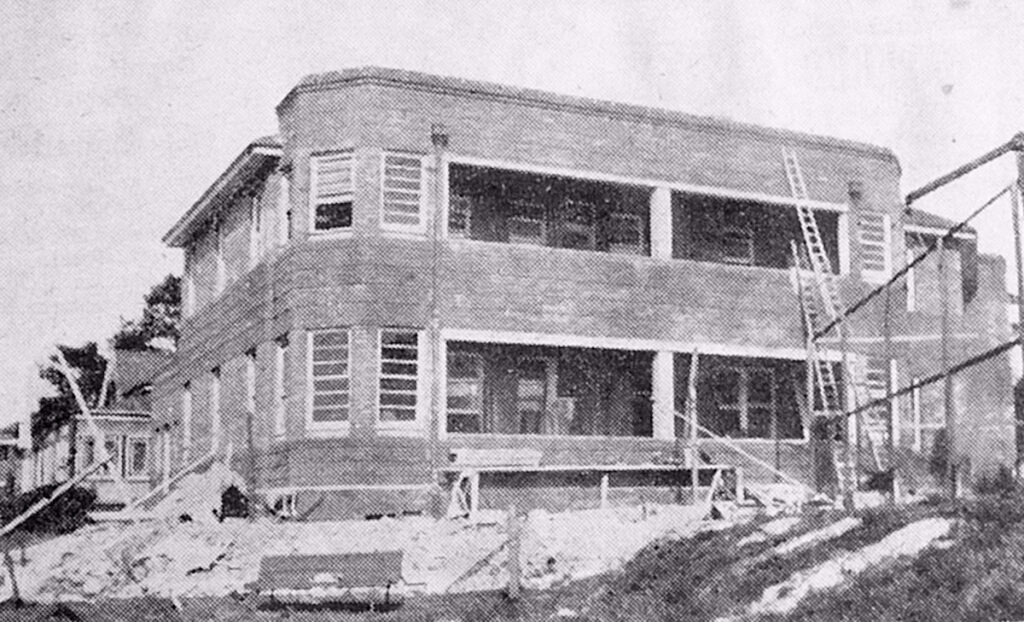“Those wonderful lovers of God’s poor”

4 August 1940. The Most Rev. Norman Gilroy, Archbishop of Sydney, opens and blesses the new extension at Our Lady’s Home. Reporters for the Catholic newspapers glowingly describe the building, designed by well-known church architect, Clement Glancey, as an example of “splendid planning, well-chosen materials and honest craftsmanship”. Built in the art deco style, with two-tone brickwork and sharp horizontal lines, the three-wing building forms a courtyard around the original timber cottage. It includes a parlour, refectory, community room, kitchen, laundry, fully-equipped dispensary, ample bedrooms and amenities. In welcoming the large crowd on behalf of Our Lady’s Nurses for the Poor, St Brigid’s parish priest, Rev. Arthur Perkins msc, said the presence of Archbishop Gilroy was a tribute to the work performed by the nurses. He praised the beauty of the new wing and said that it was “in every way perfect for the purpose for which it would be used”.
In launching a Special Appeal to meet the remainder of the not-insignificant construction costs of £8000, Rev. Dr Patrick Tuomey, said he had ample opportunity to witness the work of the Brown Nurses – those “wonderful lovers of God’s poor” – during his 14 years as parish priest in Erskineville and Alexandria. “There is no more familiar nor welcome sight in those districts than the Brown Nurses. They are regarded by stricken ones as the ambassadors of God in their special hour of need. When some old person is discovered lying unattended, having been in that state for some days, a call is sent to the Brown Nurses. They come immediately and remain long hours, often far into the night. Many times I have been asked how do the Brown Nurses live and I cannot answer that, even now. I never heard the Brown Nurses make any demand on charity for themselves.” He concluded by expressing his hope that the prayers of the friends of the Brown Nurses would eventually secure for them the sanction and blessing of the highest authority of the Church.
Archbishop Gilroy delivered an equally moving reply: “Quiet, humble and unassuming, the Brown Nurse is loved and respected wherever she is known. She is best known where her services are most needed. Need is the one claim to her services. There are no other conditions. And when she gives her services, they are always the best she is capable of rendering. The picture presented by the Brown Nurse is a model of unselfishness and disinterestedness. She serves and is not served. She gives and does not receive. The spirit of the Brown Sister is the very opposite to the spirt of the world. Hers is a spirit that thinks of others, helps others, be the cost to herself what it may. She is inspired by Christian charity. This inspiration she receives from the Catholic Church, whose spiritual daughter she is, on whose guidance she relies, in whose mission of charity and mercy she shares. You who have come here today, have co-operated and wish still to cooperate with the Brown Sisters in their work. Your intention is to supply them with the material means that will enable them effectively to do their work. Without you, they would not have the requisites to fulfil their mission of mercy. Without them, you could not effectively help those deserving cases that make a strong appeal to your heart. Like the Brown Nurses, you are actuated by charity, which you learnt from the Church that teaches you the obligation to love your neighbour, irrespective of who or what he is, as yourself, for the love of God.”